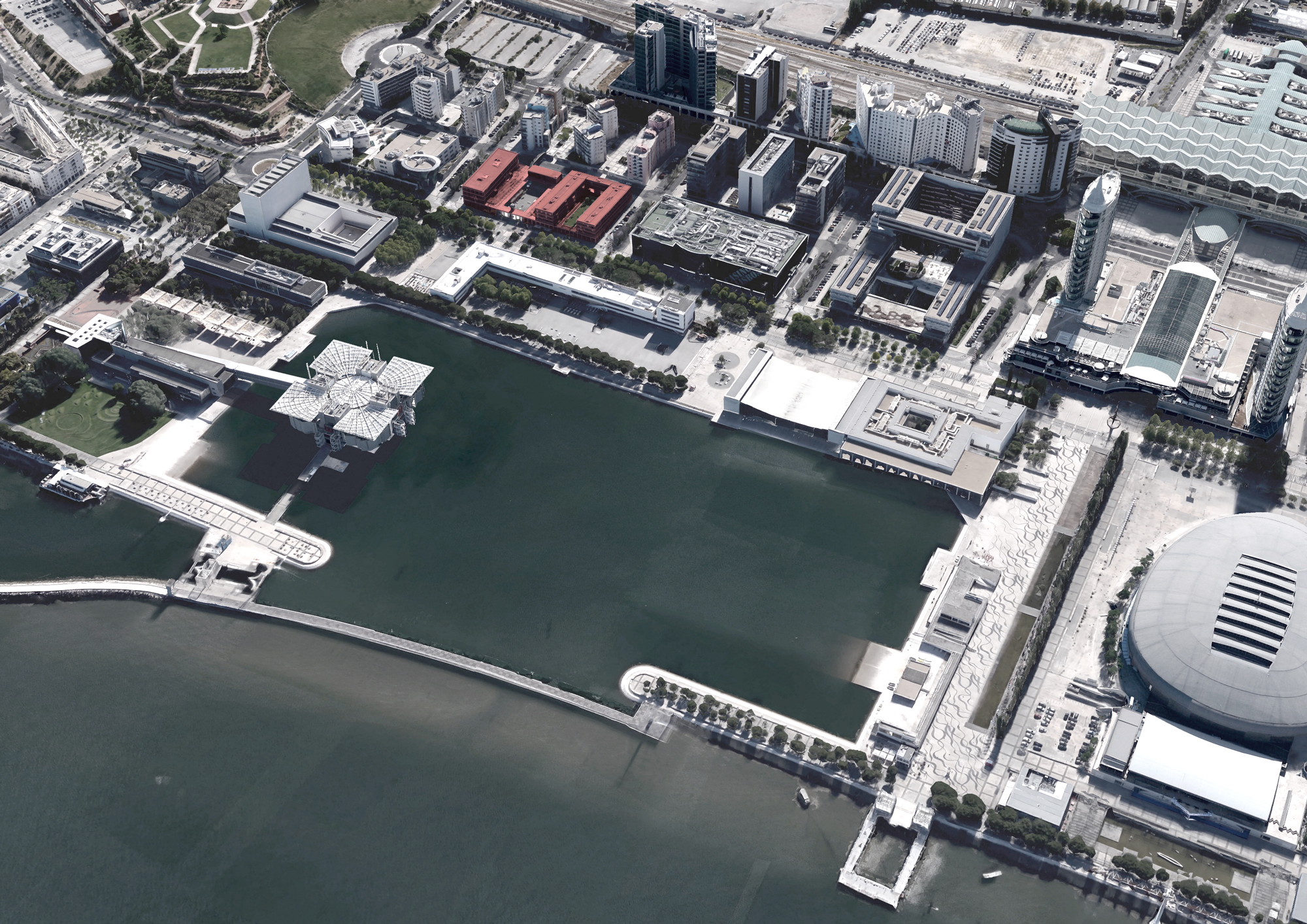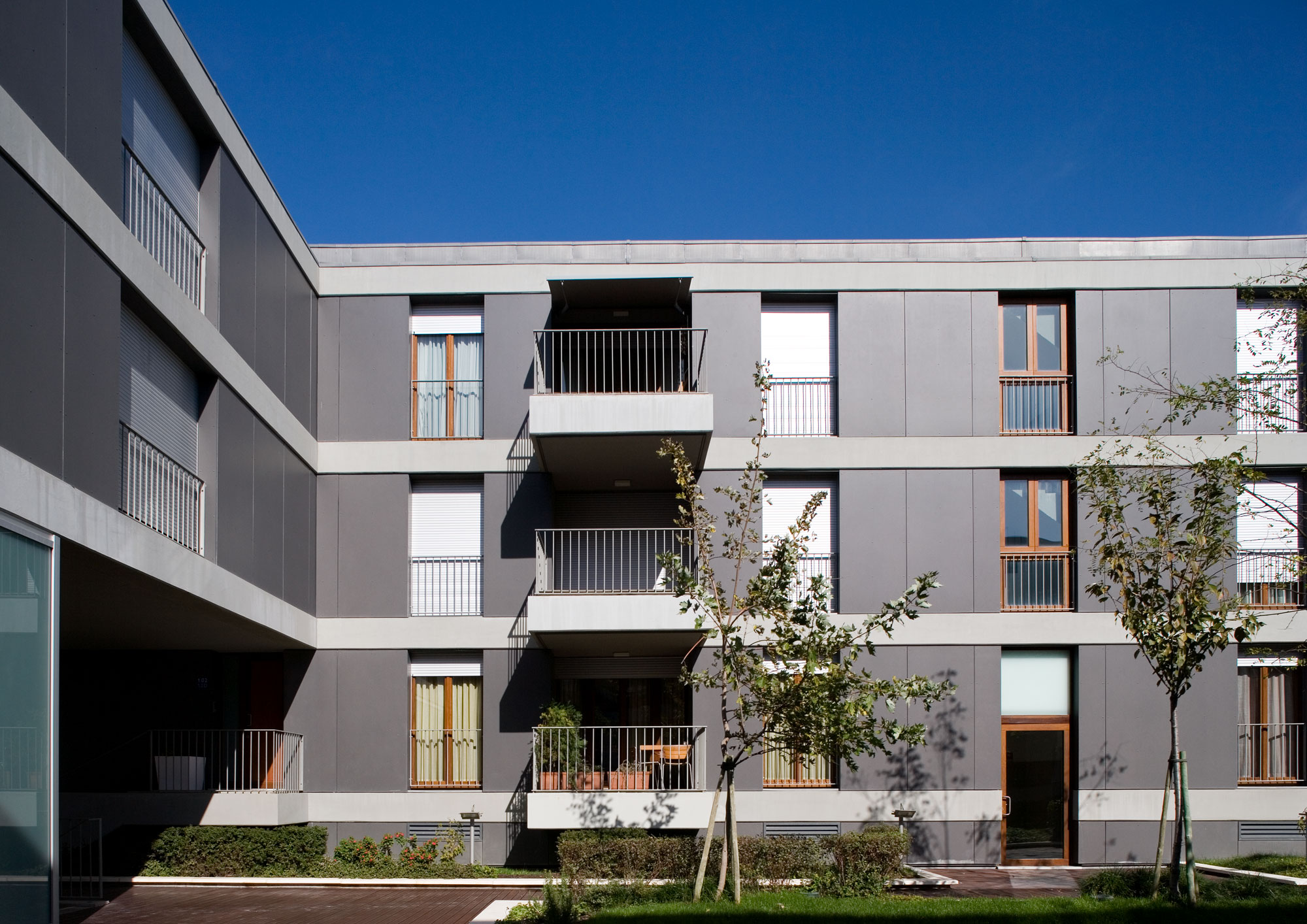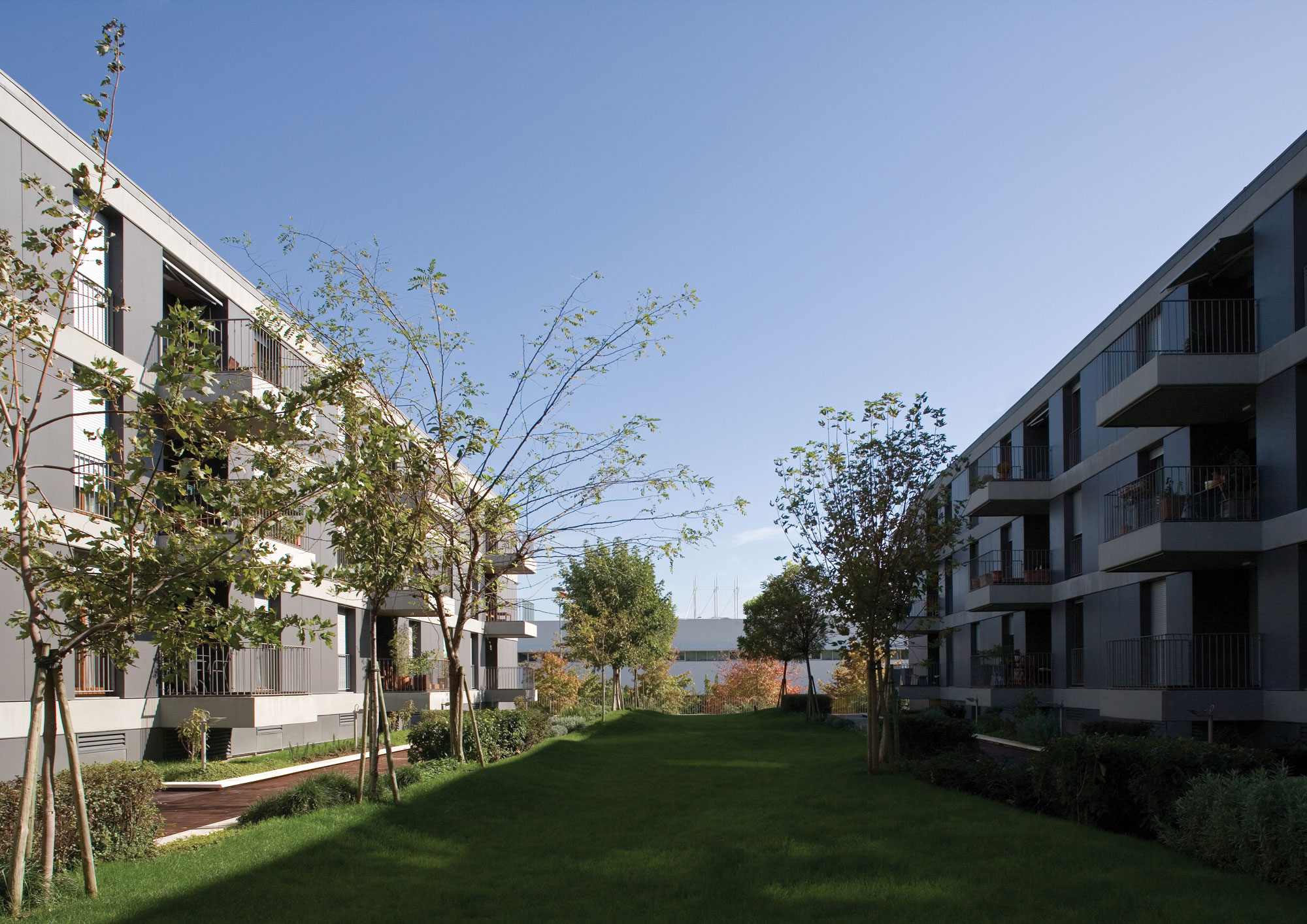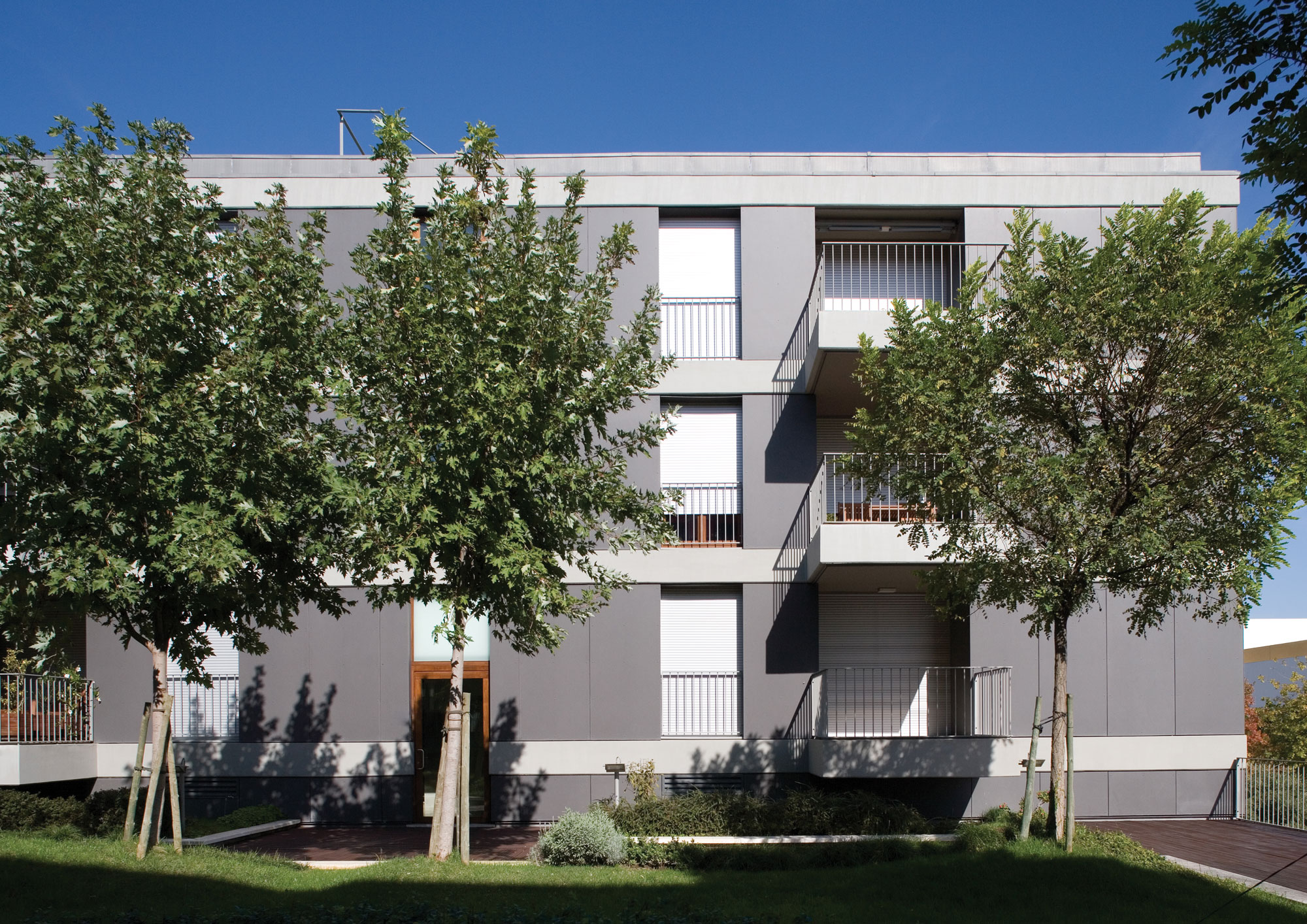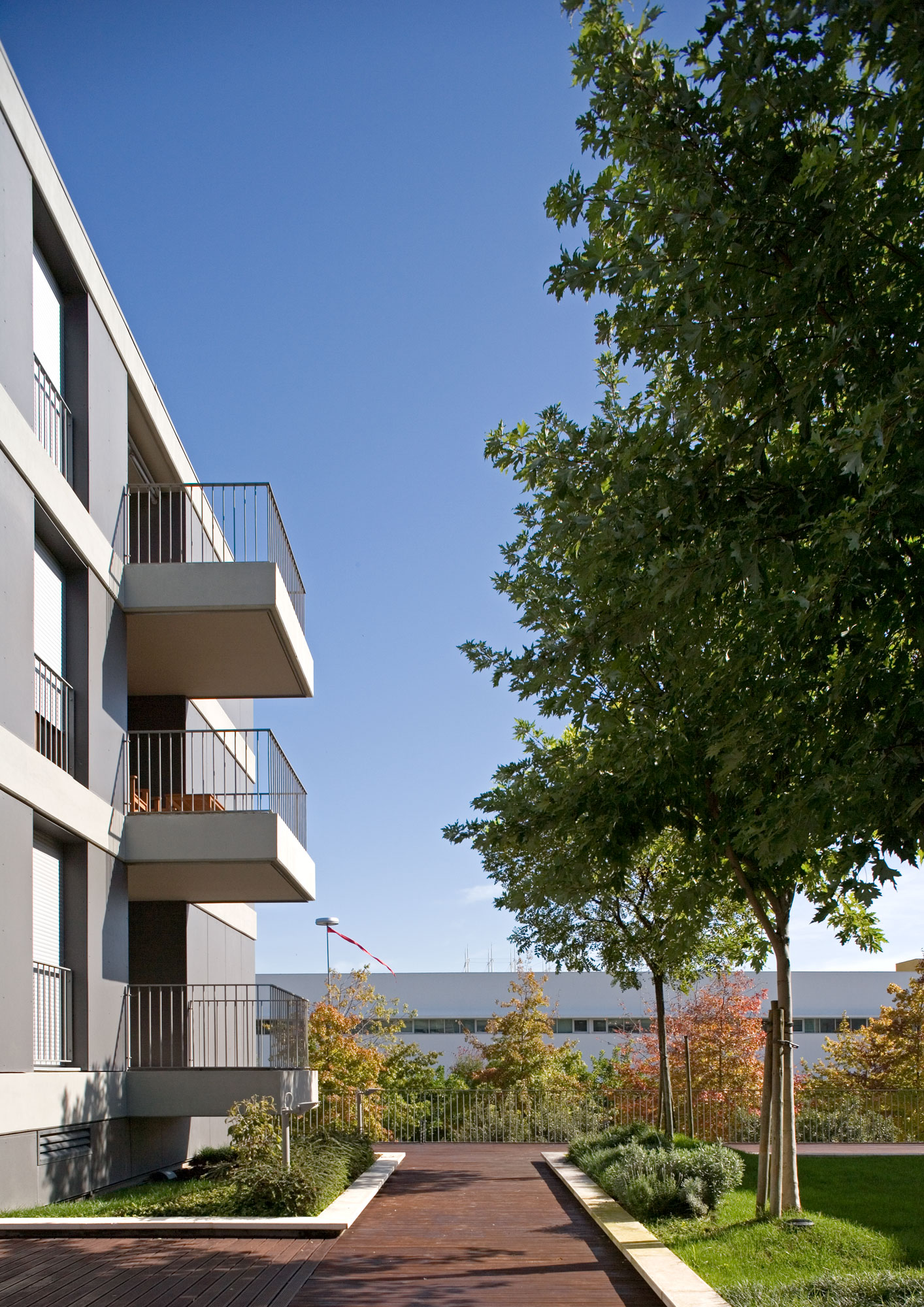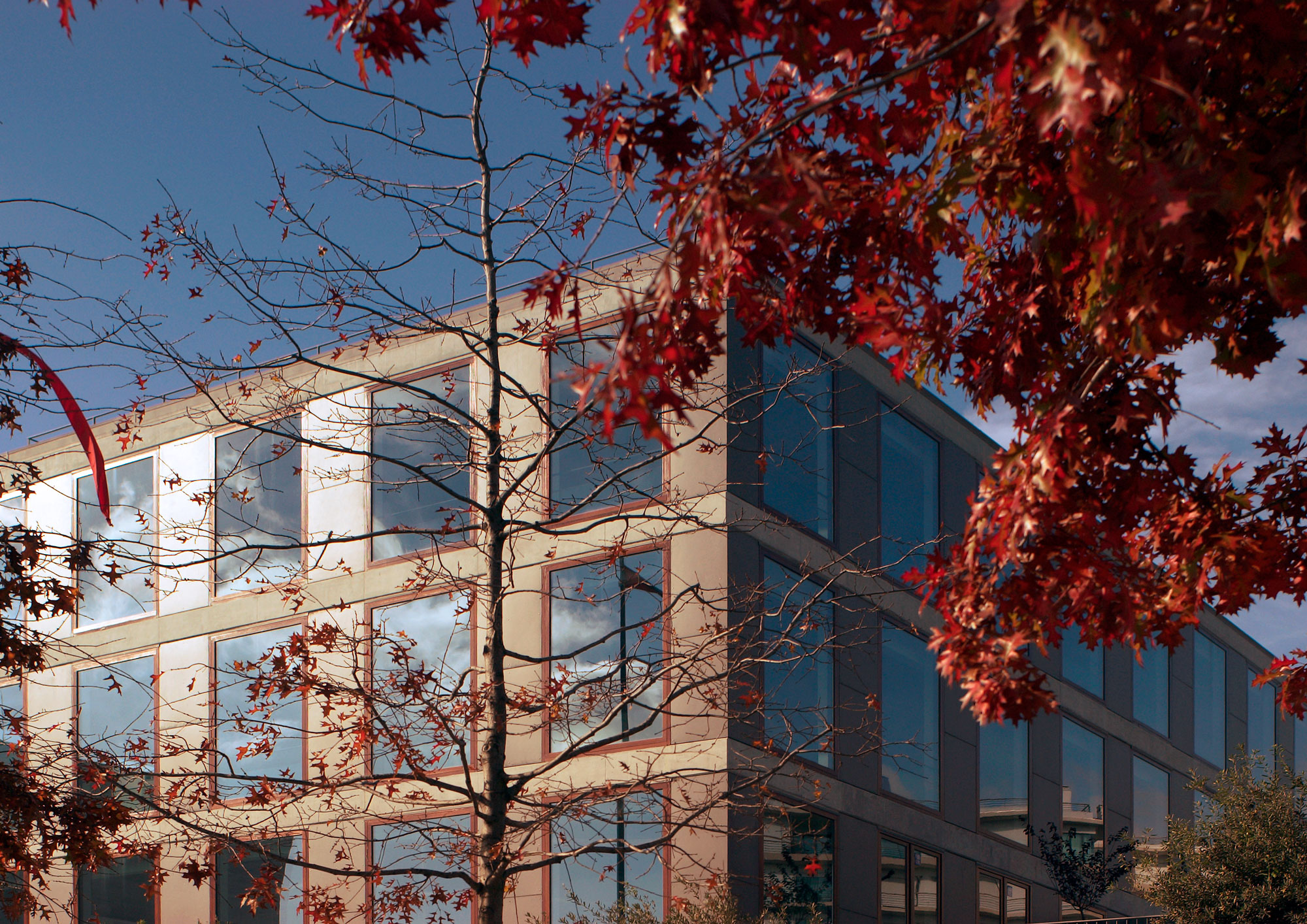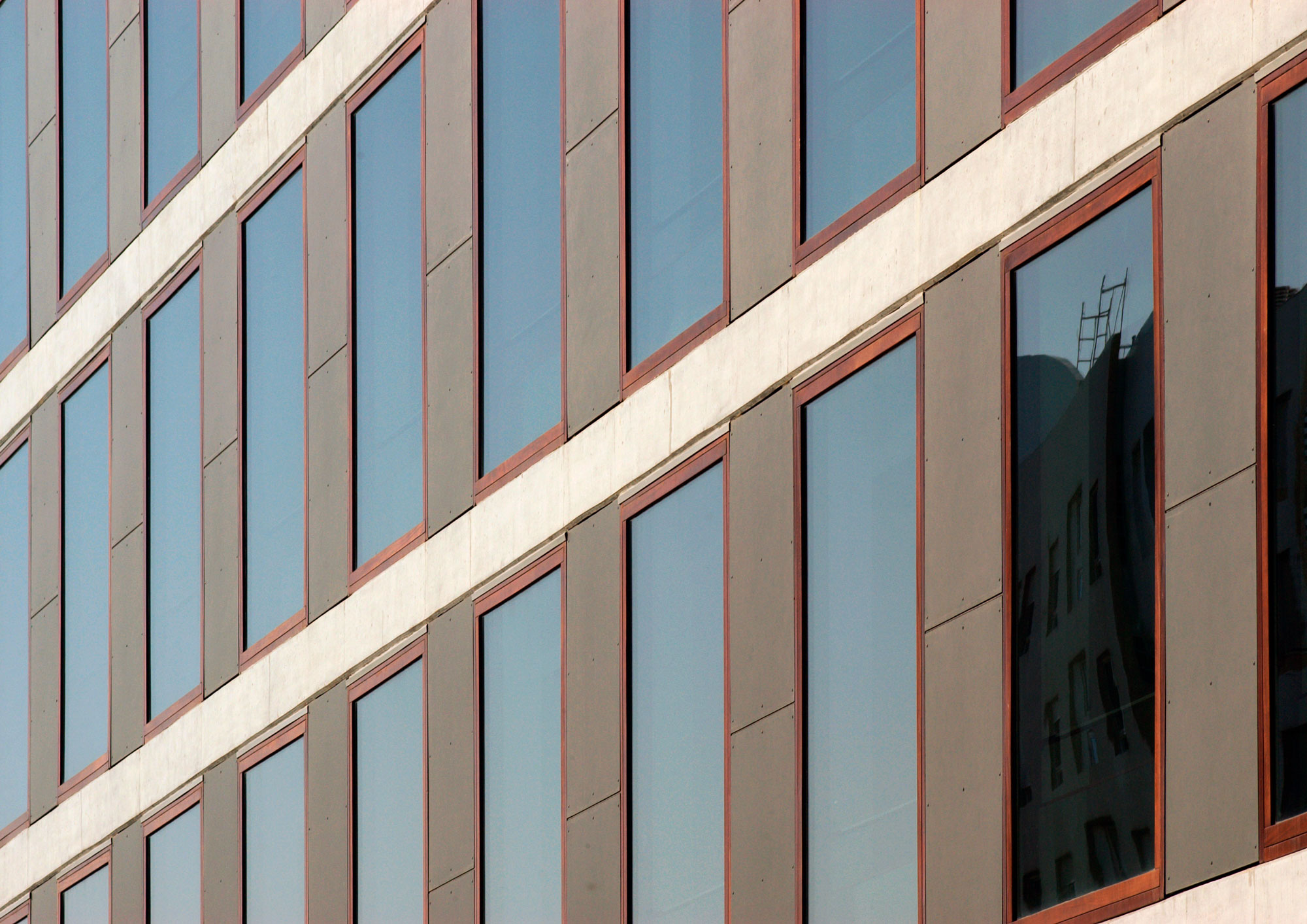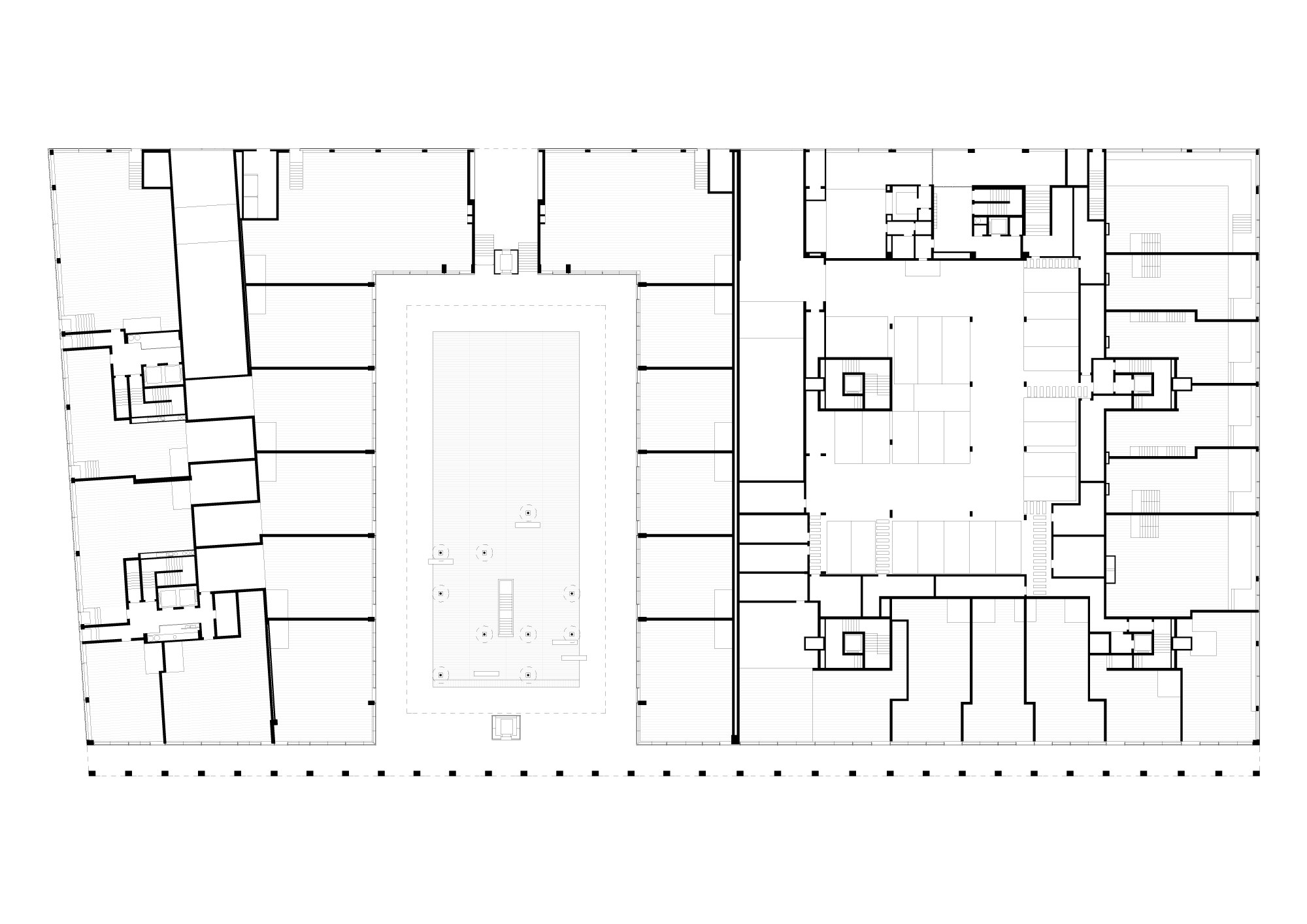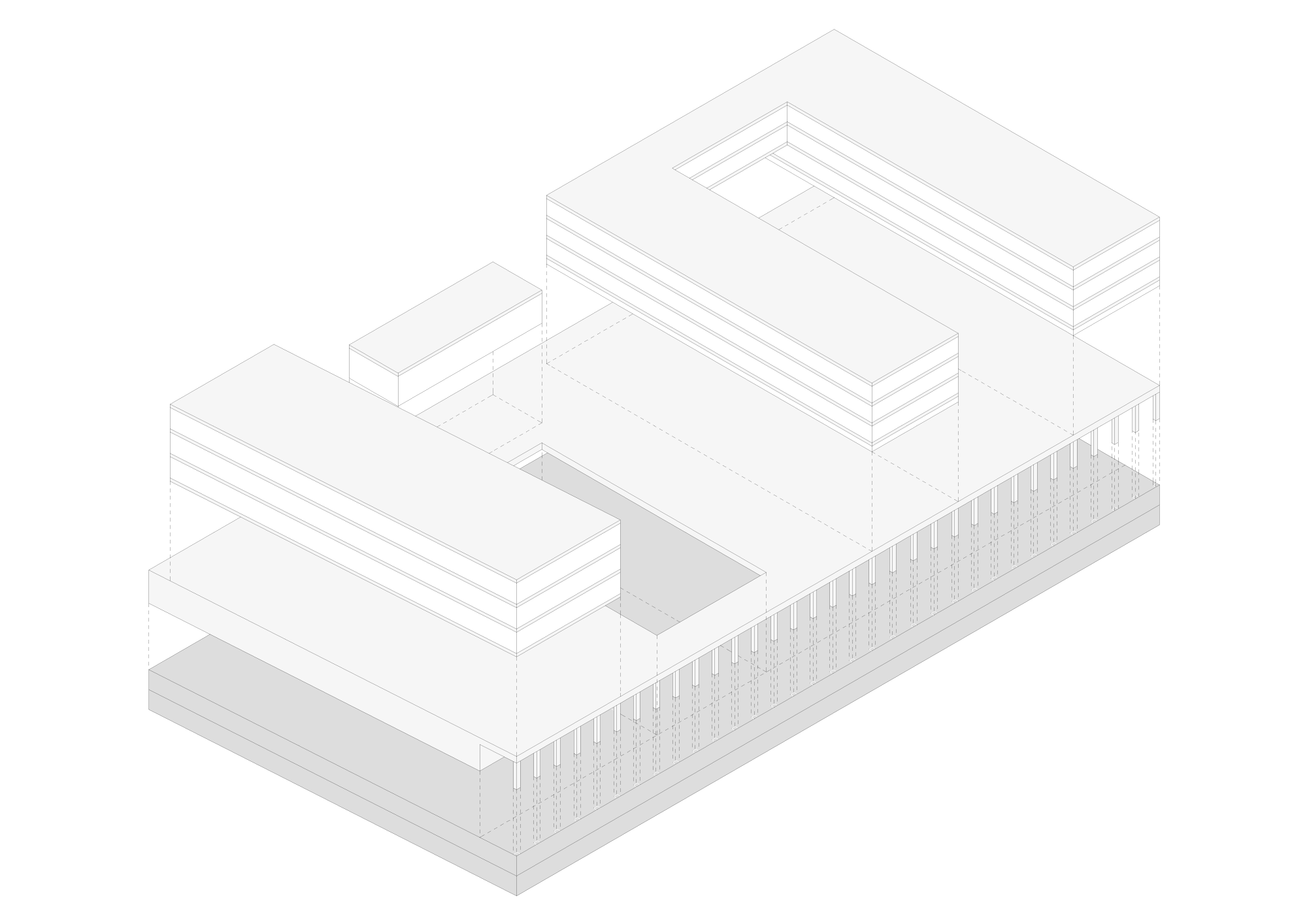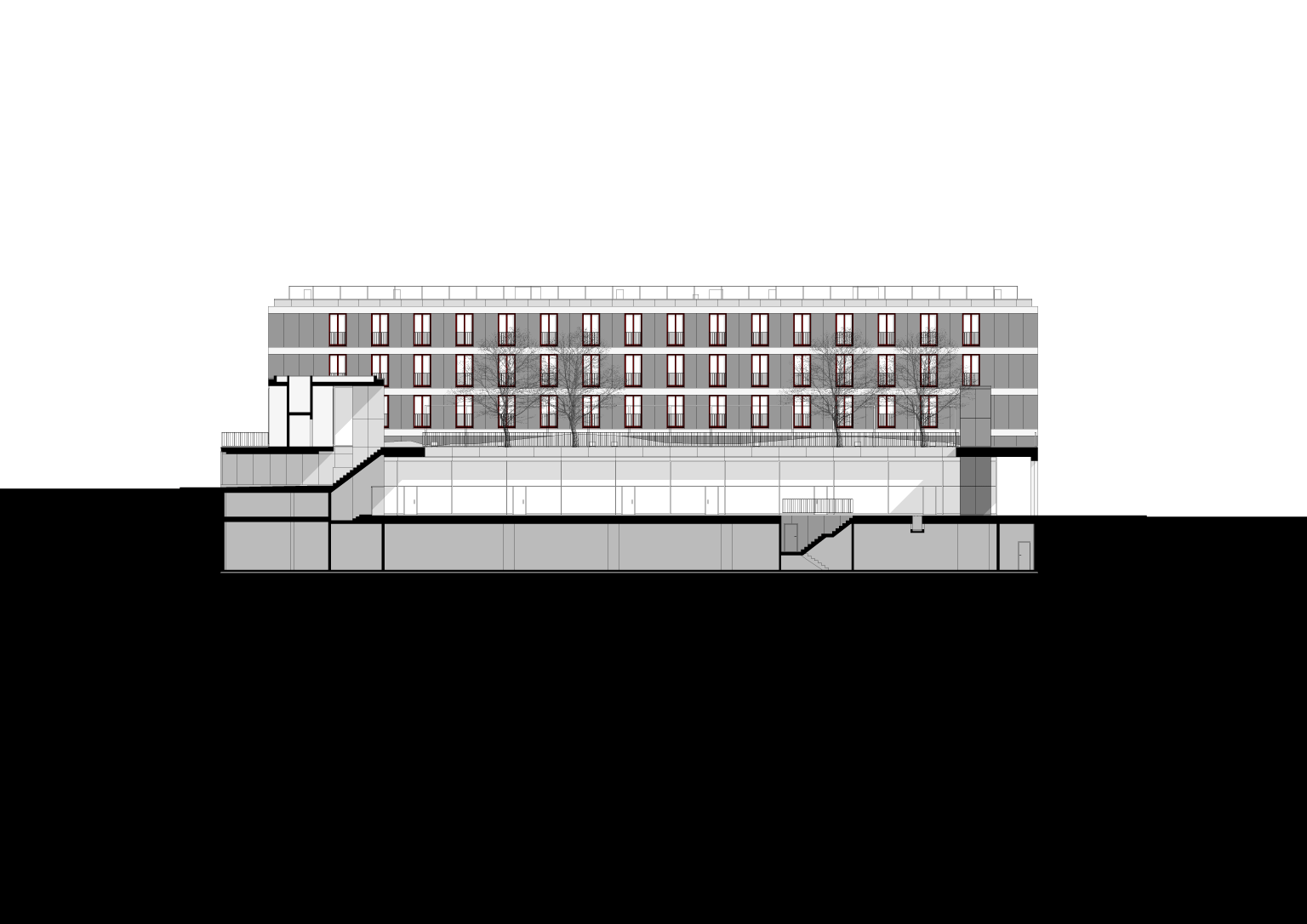03-05,
Residential Buildings, Offices and Shops in Lisbon
The Oriente Complex results from the merger in a single plot of two cooperatives and different programmes for residential, offices and shops. Set in one of the most infra-structured areas of the Lisbon Expo’98 precinct, the site faces the Boulevard of the Oceans and bordering the Siza’s Portuguese Pavilion and the Museum of Science. Formerly occupied by theme pavilions during the World Exhibition, the plot was later devised as a perimeter block divided approximately in half by the cooperatives. Even tough this separation is total, –that is, from underground parking to the surface floors–, it was nevertheless possible to create an understanding between the parties involved in regard to the public space and the compositional systems, so that the overall ensemble could be perceived as a single entity.
Complying with the legal constrains imposed by the Expo’98 master plan, the buildings are set on a platform that functions as a retail ring around the perimeter, and the latter shaped as a mandatory arcade on the elevations facing the boulevard. The housing block is set as a U-shaped volume on the platform level, permeated by an arched passageway that generates a semi-enclosed patio allowing public access to the apartments. In the office building area this U-shaped typology is received at street level generating a large public square, crowned by a mezzanine at the platform level. On the latter, besides access to the offices, a number of restaurants and cafeterias generate a constant flow of public movement. A small office building, isolated on the East top of the platform functions as a counterpoise to both the missing slot of the arched passageway of the housing block, and the public elevator tower on the opposite end of the square.
The construction system for both the housing and office facades is based on an insulated brick wall, protected by a ventilated fibber-cement panelling system. The surfacing of the peripheral beams of the floor slabs interrupts the stereotomy of the panels. In contrast with artificial nature of concrete and fibber-cement, the frames are made of solid redwood. The physical presence of the ensemble, however discreet and formally restrained, aims to establish a positive contrast with the multifarious plasticity of the surroundings.

